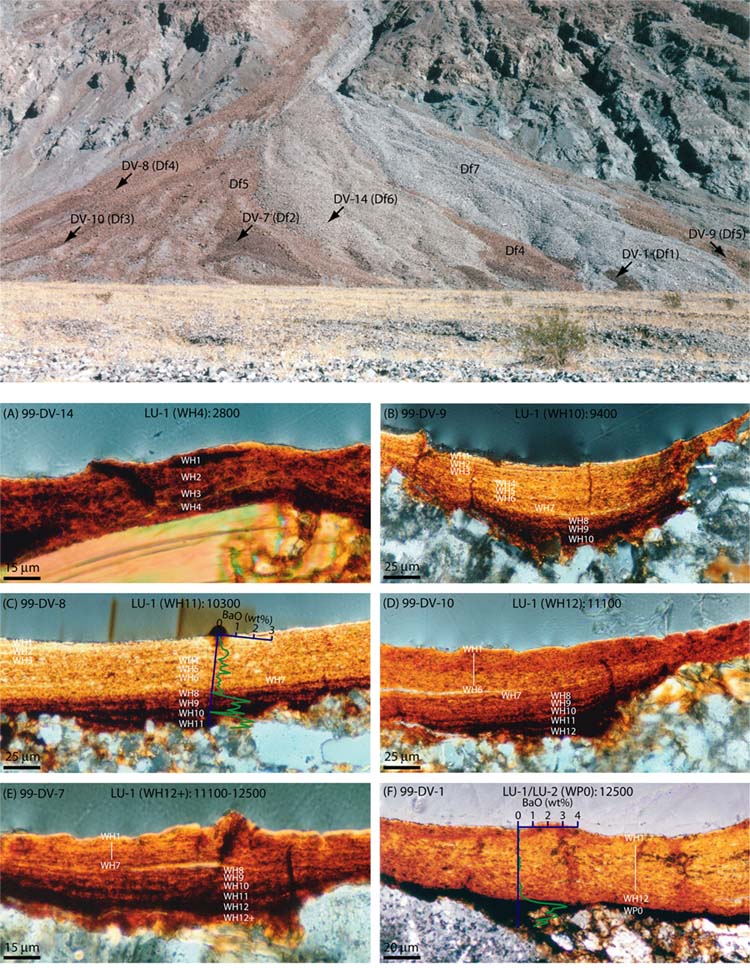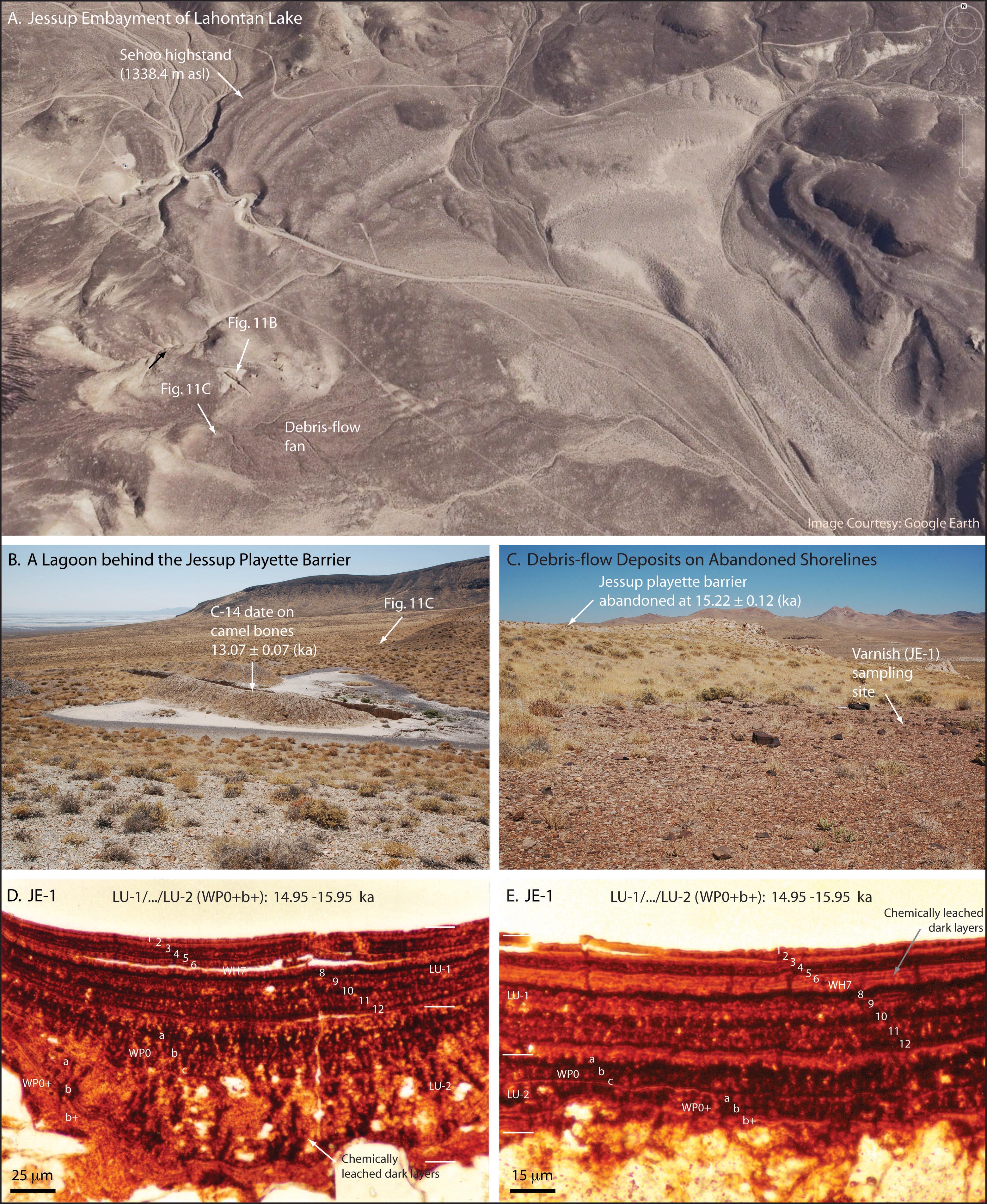

Figure Caption: A debris-flow fan (~ 0.04 km2 in size) on the east side of Death Valley, California (upper panel) and optical microstratigraphies of rock varnish from the debris-flow fan deposits (lower panel). Seven debris-flow fan units (Df1-Df7) were identified on the basis of fan morphology and degree of rock varnish coverage. Varnish-based age estimates indicate that these debris-flow fan units were deposited around 12500 (Df1), 12500-11100 (Df2), 11100 (Df3), 10300 (Df4), 9400 (Df5), and 2800 (Df6) cal yr BP (Liu and Broecker, 2006). The dating results also indicate that the deposition of these fan units was more likely to have occurred during relatively wet periods of the Holocene.

Figure Caption: VML dating of debris flow deposits on abandoned recessional shorelines of Lake Lahontan, central Nevada. (A) Jessup embayment with the Sehoo highstand and the varnish sampling site (an unpaved road and some jeep tracks give the scale). (B) A former lagoon behind the Jessup playette barrier, where a radiocarbon date on camel bones from a trench was obtained (Adams and Wesnousky, 1998). (C) Sampled debris flow deposits just below the Sehoo highstand. (D) and (E) Visual microstratigraphies uncovered in varnish from debris flow deposits in (C) display two oldest layering sequences of LU-1/LU-2 (WP0+b+), yielding a minimum-limiting VML age estimate of 14.95–15.95 ka for the lake recession from the Sehoo highstand, in good agreement with the calibrated 14C date of 15.22±0.12 ka from the camel bones. Note that varnish ultra-thin sections were made slightly thicker (~10-15 μm) to see the Holocene relatively weak black layers in (D) and (E). Also note that Mn in pre-Holocene black layers WP0+a, b of (D) have been chemically leached, transforming these once Mn-rich black layers to now Mn-depleted orange/yellow layers (cf. Liu and Broecker, 2013)